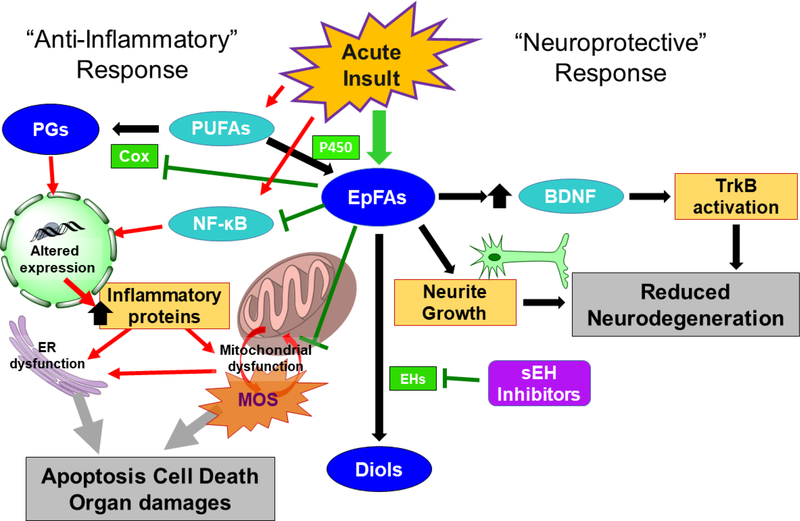Figure 2.
Cellular action of epoxy-fatty acids (EpFAs). Acute CNS injury can stimulate the release of polyunsaturated fatty acids (PUFAs) from the membrane that are converted by cyclooxygenase (COX) to prostaglandins (PGs). PGs promote production of inflammatory proteins leading to mitochondrial dysfunction, endoplasmic reticulum (ER) dysfunction and eventually apoptosis. EpFAs, produced from PUFAs by cytochrome P450 (P450) and degraded by epoxide hydrolases (EHs), reduce inflammation by blocking NF-κB signaling, by reducing COX activity and through other poorly understood mechanisms. In addition, EpFA can promote neuroprotection by promoting BDNF signaling in astrocytes and stimulate neurite growth in neurons.

